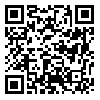BibTeX | RIS | EndNote | Medlars | ProCite | Reference Manager | RefWorks
Send citation to:
URL: http://ijer.hormozgan.ac.ir/article-1-308-en.html
2- Associate Professor of Data Envelopment Analysis, Department of Mathematics and Computer Science, School of Basic Sciences, Science and Research Branch, Islamic Azad University, Tehran, Iran ,
3- Research Center of Performance and Productivity Analysis, Istinye University, Istanbul, Türkiye
Objective: Games serve as an apt instrument for promoting innovative pedagogical approaches. The objective of the current investigation is to examine the influence of educational games on creativity through a methodical exploration.
Methods: The present study was executed utilizing a systematic review methodology. To this end, during the timeframe from 2013 to 2014, a comprehensive search was conducted for all articles pertinent to the effects of educational games on creativity within Persian databases, which include the National Journals Database, the Academic Jihad Scientific Information Center Database, the Noor Specialized Journals Database, and the Iranian Institute of Information Science and Technology Research, in addition to Google Scholar, employing keywords such as educational games, creativity, game-based learning, and educational group games. Following a rigorous screening process based on predefined inclusion and exclusion criteria, 21 relevant articles were chosen for the composition of this manuscript.
Results: The study's outcomes revealed that scholars have predominantly concentrated their inquiries on the ramifications of educational games concerning critical thinking and problem-solving, the correlation between educational games and motivational aspects of learning, the effects of both digital and physical gaming environments on creativity, the significance of social interactions within educational gaming contexts, the influence of educational games on cognitive and social-cognitive competencies, and frameworks for evaluating creativity within educational games.
Conclusions: In summary, these thematic findings suggest that educational games constitute a potent instrument for augmenting creativity among students, contingent upon their thoughtful design and execution.
Received: 2024/02/28 | Accepted: 2024/09/16 | Published: 2024/12/1
| Rights and permissions | |
 |
This work is licensed under the Creative Commons - Attribution 4.0 International. |







